コラム
落合憲弘
John Sypal
タカザワケンジ
なぎら健壱

While the idea of one photographer holding concurrent photographic exhibitions isn’t unheard of in Tokyo, admittedly, such photographers usually have the initials D.M. or N.A. However, in July of 2022, work by S.A., er, Shinya Arimoto, can be seen at Zen Foto Gallery and the Takashimaya department store in Nihombashi.
That’s right- this week’s column ties in with last week’s review of Arimoto’s new book “Tokyo Strut”.
Keep in mind that everything that I said then regarding his work (obviously) holds true for these exhibitions- particularly in the way his photographs offer a cheeky strike back against our contemporary mood of gloom and doom- his pictures remain cheerfully defiant in the face of contemporary society’s plea towards smothering submission in the name of propriety, stability, and safety.
To be honest, I was shocked when I heard last year that Arimoto’s work was to be shown at, of all places, the illustrious Takashimaya department store in Nihombashi. I don’t know New York well enough to be sure that this analogy will work, but that’s kinda like Diane Arbus showing at Saks 5th Avenue back in the day. (Would that be a surprise?).
That department stores in Japan have long been legitimate venues for artistic exhibitions may be of surprise to some. My usual photo gallery circuit is the Shinjuku scene. If you haven’t been yet, a lot of Shinjuku galleries require first-time visitors to test their courage and trust in google maps as the spaces reveal themselves only after a flight or two of steep stairs in an old, mostly unmarked concrete building. The route to X Gallery in Takashimaya then, is the exact opposite. Here, after passing through the subway wicket you enter the basement of the refrigerator-cold and spotlessly clean department store. Next walk past counters of expensive cakes and sweets and imported perfume and step into a large, brass elevator operated by an impeccably dressed, beautiful woman with a sing-song, nasally voice asking you which floor you’d like to go to with linguistic levels of politeness that are impossible in English. “Six” you say. If fellow shoppers get off a floor early, you will hear a polite, nasally explanation of what sort of items are available. Very well. Floor 6. The men’s department, I think. A sign from the ceiling points the way to the gallery- wait, there’s two. Galleries. Take a right and there it is: X Gallery.
The space is a crisp, long rectangle. High-ish ceilings with a luxurious, rust-colored tile floor. Shinjuku, this ain’t.
The title of this is Tokyo Circulation / Tokyo Strut- a combination of two of Arimoto’s 6x6 monochrome series which, in actuality, are not as separate as one might think.
“Tokyo Strut”, just like the book, is comprised of Arimoto’s more recent flash-work with his Hasselblad SWC and it’s super-wide lens. The “Circulation” part of this show is undoubtedly the long line of matted prints along the far all- it’s older work which Arimoto made with his Rolleiflex. This camera, a TLR, has a more traditional focal length for portraiture. It captures beauty, and likewise, if you’re a Keats fan, Truth. Think of the Rolleiflex as a “fine violin” to the bawdy electric guitar riffs that Arimoto’s Hasselblad SWC blasts out.
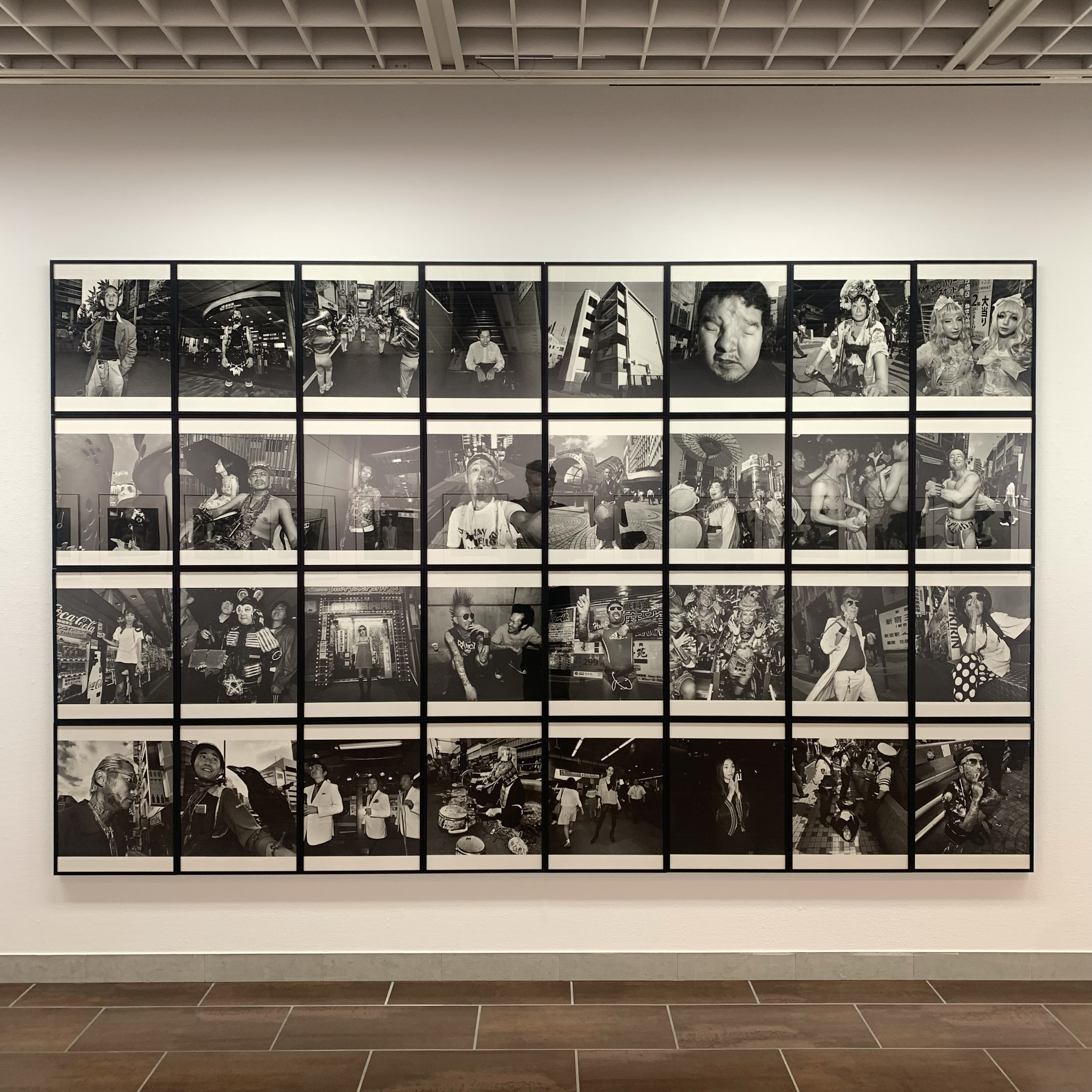
Rather than being disjointed though, it works- - the duality in impact of the tools is linked through the medium, and spirit of the photographer wielding them.
One thing you’ll note is the quantity and scale of the photographs exhibited. X Gallery is a comparatively large as far as galleries go in Tokyo and Arimoto’s typical desire for quantity makes great use of the space- note: quantity here is not at the expense of quality. Standing before either of the two 4x7 grids of large silver gelatin prints elicits the sensation of crossing the street at a busy intersection in Shinjuku. These faces, shown as a mass of photographic humanity are (even when they’re of crows or dogs) absolutely, gloriously, tragically, wonderfully human. Your eyes can’t sit still - - and it’s hard not to share in Arimoto’s excitement for the streets and his people when experiencing this show.
From the gallery, go back to the elevator girl or take the escalator down and exit Takashimaya. Hop on the Ginza line, change at Hibiya, and a few stops on the Hibiya line get off at Roppongi. Wind through the station (pass the Burger King and cut through a Family Mart to save time) and soon, above an entirely adequate burrito shop in a shopping complex you’ll find Zen Foto Gallery.
The Zen Foto show is again, Tokyo Strut- but, this time! Unbelievably! Huge! Silver Gelatin! Prints!
Quantity, sure- Quality, of course- but SIZE?
IMPACT is the name of this game- for this one Arimoto spent several days in a darkroom larger than I’ve ever been in (I’m guessing) to produce the largest RC prints possible on the biggest sheets available. It’s wild. Our eyes and minds are dulled to larger-than-life faces on signs and billboards around the city- but it is something different to stand before a photograph and look at a face that’s enlarged bigger than any real face could ever actually be. I’m probably not making sense here.
Normally, when we’re looking at pictures of people we’re looking at them/scrolling past them as tiny little parts of backlit pictures on smartphone screens- or maybe on covers of magazines. What I am saying is, faces which we’re offered to contemplate in photographs are rarely reproduced very large and almost never life size. Here though, you’re bowled over by monochrome giants- it’s incredible. Like the quantity in the Takashimaya show, the impact of size here is in mirrors Arimoto’s enthusiasm for the medium and subjects.
I also suspect that in some way, making the people in the pictures larger than he is (we are), Arimoto is expressing a sort of humility towards his subjects. Certainly, there’s precedent in art for colossal reproductions of heroes and buddhas.
Now that I think of it, there is a sort of stoic, if not monkish devotion in Arimoto’s approach to photography.
Perhaps here then, what he offers is an assembly of bodhisattvas.
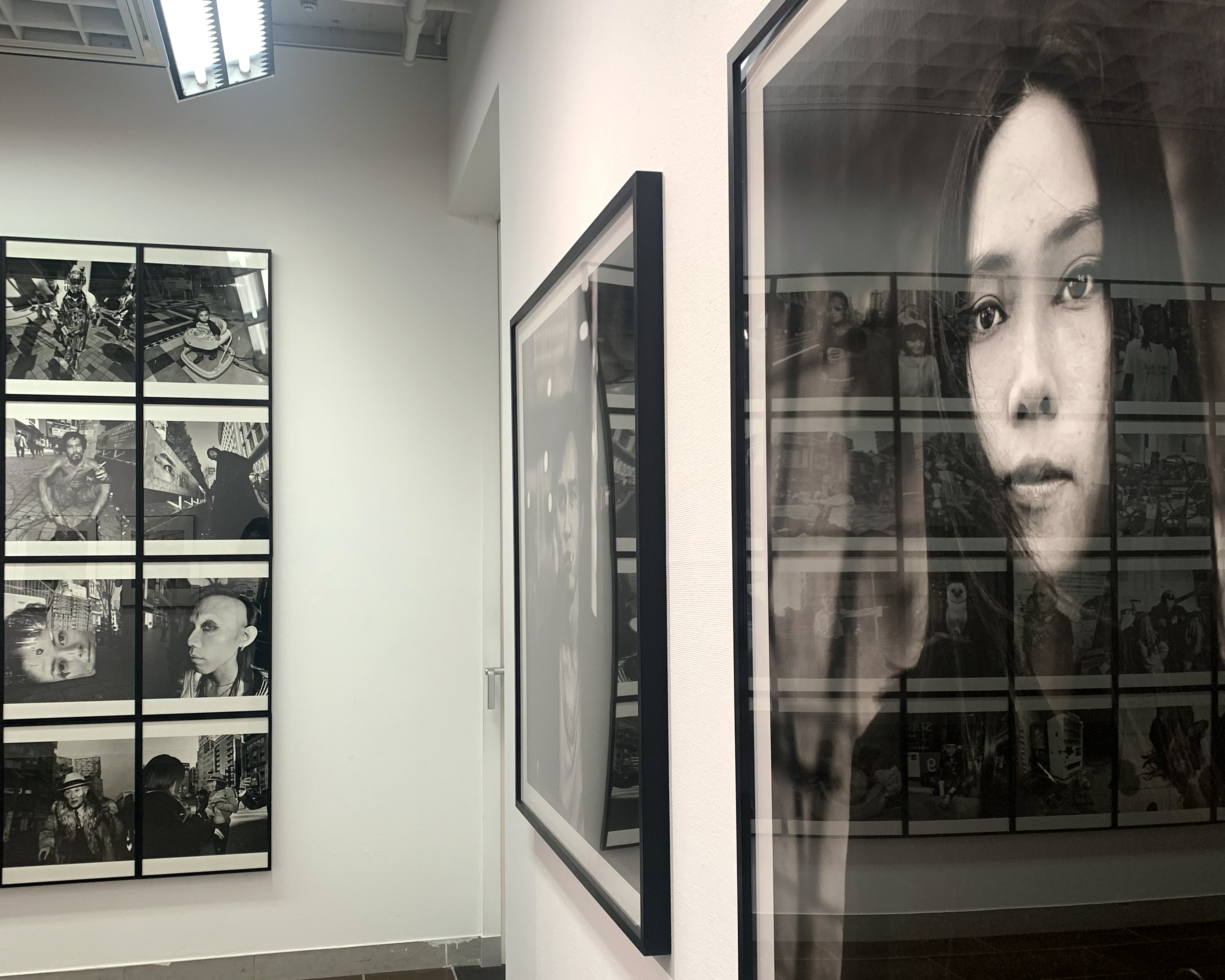
一人の写真家が同時に写真展を開催することは東京では珍しいことではありませんが、そのような写真家のイニシャルはたいていD.M.かN.A.です…。しかし2022年の7月には、S.A. いや、Shinya Arimotoの作品を日本橋の高島屋の「美術画廊X 」と六本木にある「Zen Foto Gallery」とで見ることができるのです!
そう、今週のコラムは、先週のRecommended Photobookで紹介した有元伸也さんの新刊『Tokyo Strut』レビューと連動しています。
作品の印象ですが、先週書いた通り、彼の写真は、現代の陰鬱なムードに対する生意気な反撃であり、礼儀や安定、安全の名の下に服従を求める現代社会に対して、彼の写真は明るく反抗的です。
昨年、有元さんの作品がよりによって日本橋高島屋で展示されると聞いたときは、正直言って衝撃を受けました。 ニューヨークをよく知らないけど、この例えがうまくいくかどうかわかりませんが、昔、ダイアン・アーバスがサックス5番街で展覧会を開いたようなものでしょう(驚かれるかな?)。
日本では昔からデパートが芸術的な展示の場として認知されているということに、外国の方は驚かれるかもしれません。
個人的に、フォトギャラリー巡りは新宿が定番です。新宿のギャラリーに初めて訪れる人へ、勇気を持つこととGoogle Mapを信頼することをオススメします。古くて怪しいコンクリートの建物の中に入って急な階段を1、2段のぼる勇気があるかどうか(また、暑い日に階段をのぼれるかどうかの勇気が必要なのです)。
日本橋の高島屋の「美術画廊X」への道は、その真逆です。
地下鉄の改札を抜けると、冷蔵庫のように冷え切った清潔なデパートの地下に入ります。 次に、高価なケーキやお菓子、輸入香水のカウンターを通り過ぎ、大きな真鍮製のエレベーターに乗り込むと、非の打ち所のない服を着た美しい女性が、鼻にかかった声で、英語では不可能なレベルの丁寧さで、何階に行きたいか聞いてくれますので「6階」と答えましょう。 他のお客さんが早くフロアを出てしまうと、どんな商品があるのか、丁寧な鼻声の説明が聞こえてきます。昭和的です。
さて、6階です。男性用売り場だと思います。 天井からのサインはギャラリーへの道を指し示しているので、右に曲がると「美術画廊X」です。このギャラリーは、すっきりとした長方形で、天井は高く、床は高級感のある錆色のタイル張り。新宿の写真シーンとは別の世界です。
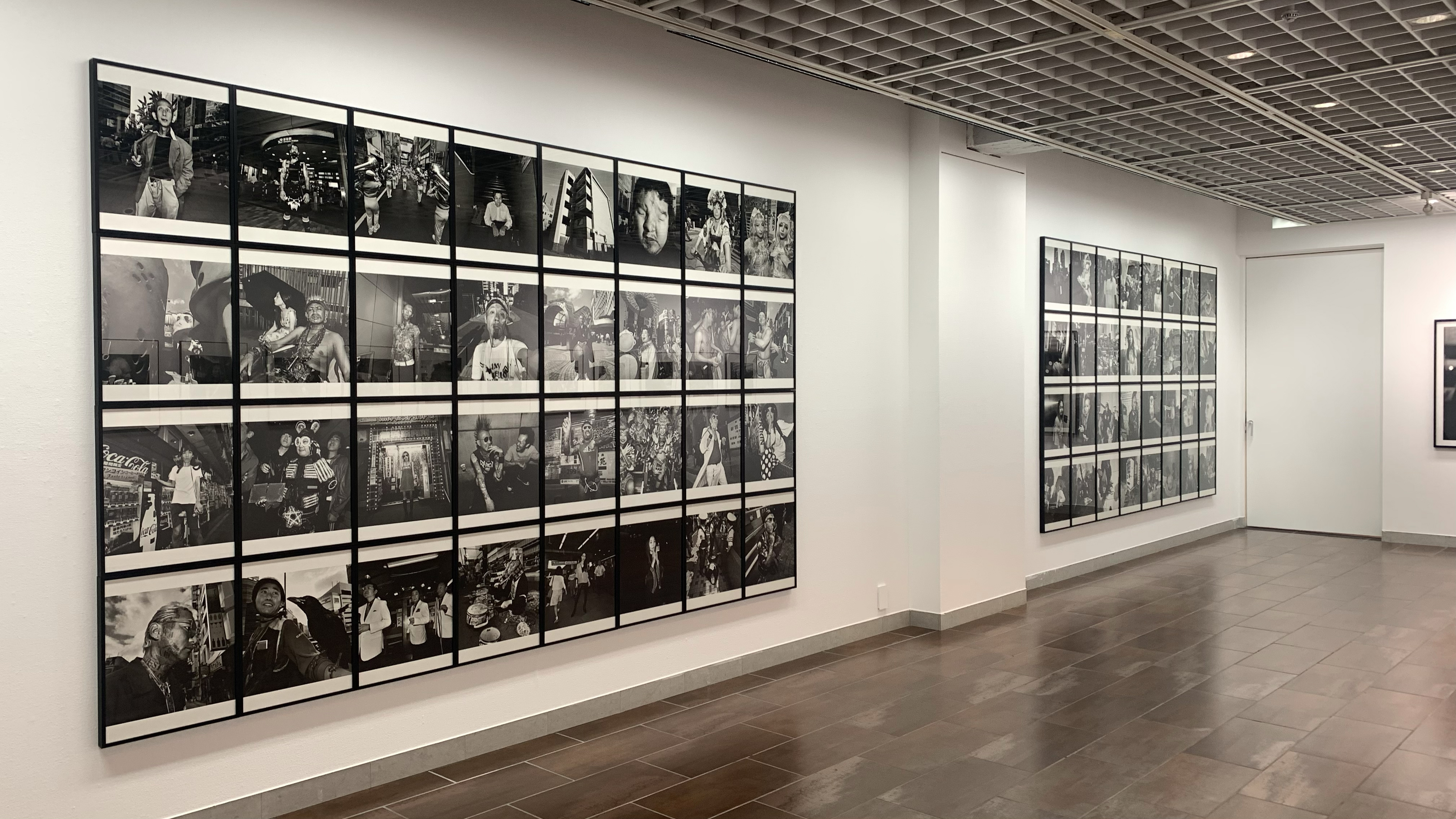
この展示のタイトルは「Tokyo Circulation / Tokyo Strut」で、有元さんの6×6モノクロームシリーズの2つを組み合わせたものです。
「Tokyo Strut」はハッセルブラッドSWCと超広角レンズとフラッシュを用いて撮られた近作です。 この展覧会の “circulation” (循環)の部分は、間違いなく、有元さんがローライフレックスで撮影した、すこし昔の作品に沿った長いマット・プリントのラインです。このローライフレックスはTLRと呼ばれるもので、ポートレート撮影として伝統的な焦点距離です。美しさをとらえ、同様に詩人・キーツのファンなら「真実」をもとらえます。有元さんのハッセルブラッドSWCが奏でるエレキギターのリフに対して、ローライフレックスは「上質なバイオリン」とでも思ってください。
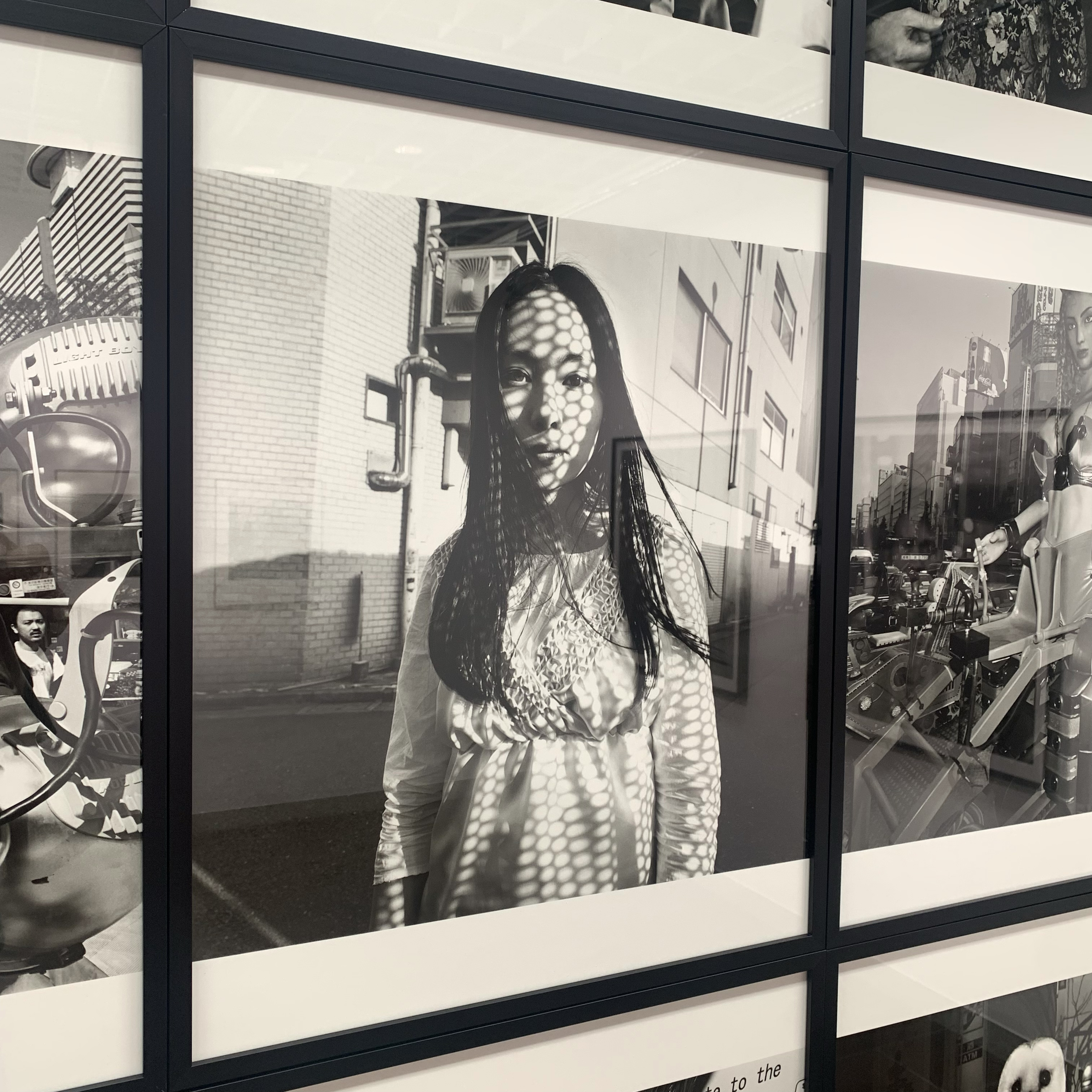
しかし、ローライとハッセルのコンビはバラバラになるのではなく、道具の持つインパクトの二面性が、媒体やそれを操る写真家の精神を通してリンクしているのです。
注目すべきは、展示されている写真の量と規模。「美術画廊X」は東京のギャラリーの中では比較的大きく、有元さんらしい「量」への欲求がスペースを有効に使っています。間違いなく量は質を犠牲にしているわけではないのです。

4×7判の大きなゼラチンシルバープリントの前に立つと、新宿の交通量の多い交差点を横断しているような感覚になります。写真のような人間の塊として映し出されたこれらの顔は、(それがカラスや犬であっても)絶対的に、輝かしく、悲劇的に、素晴らしく人間的です。そして、このショーを体験するとき、有元さんの街と人々への興奮を分かち合わないわけにはいかないのです。
では、ギャラリーからエレベーターガールに戻るか、エスカレーターで降り、高島屋を出ます。銀座線に乗り、日比谷で乗り換えて、日比谷線で数駅、六本木で降ります。駅前を通り抜け(バーガーキングを通り過ぎ、ファミリーマートを通り抜けると近道)、複合ショッピングセンターの中のまったく平凡なブリトー屋さんの上に「Zen Foto Gallery」はあります。
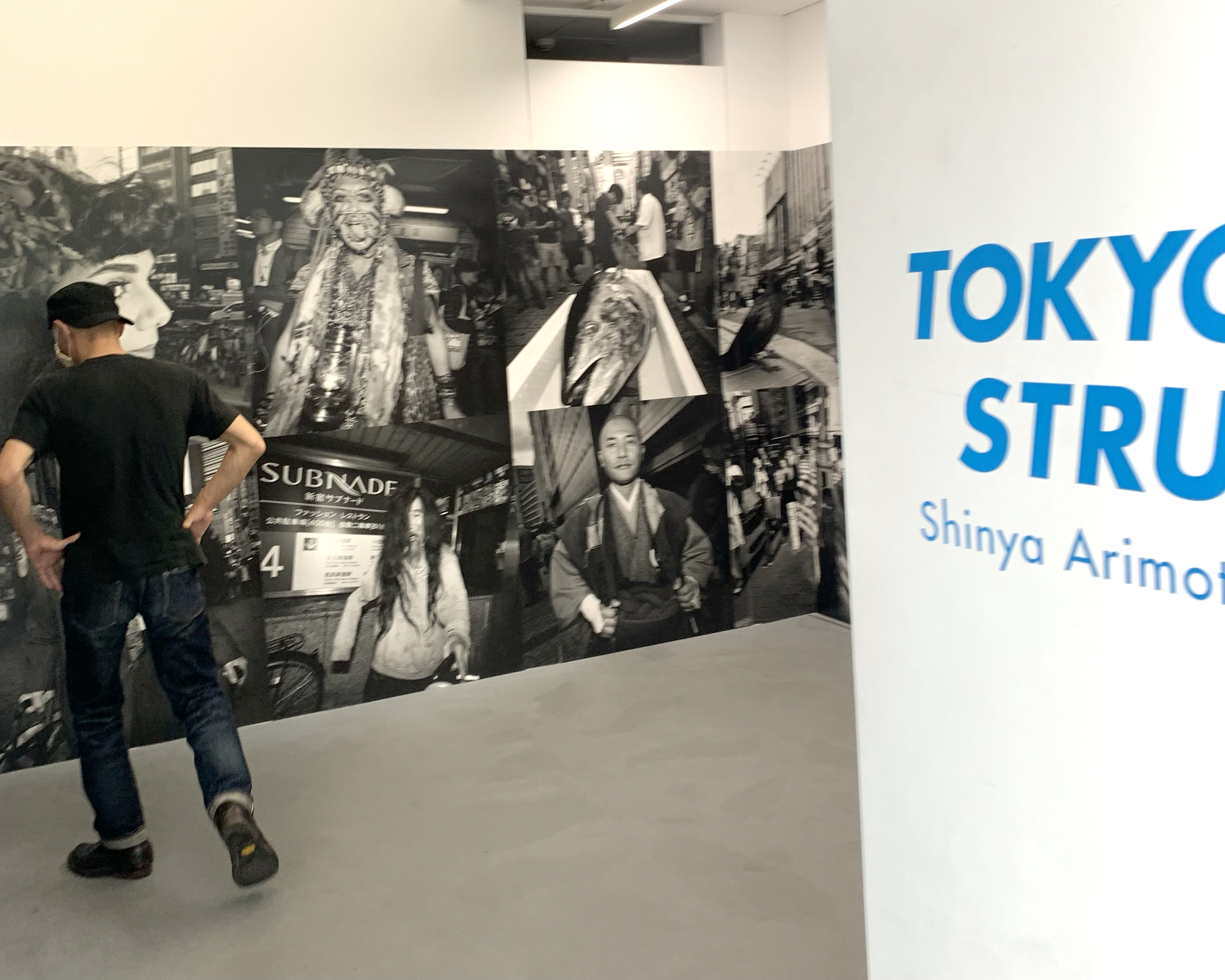
Zen Foto Galleryの展示も「Tokyo Strut」ですが、しかし、信じられないほど大きいゼラチンシルバープリントです!
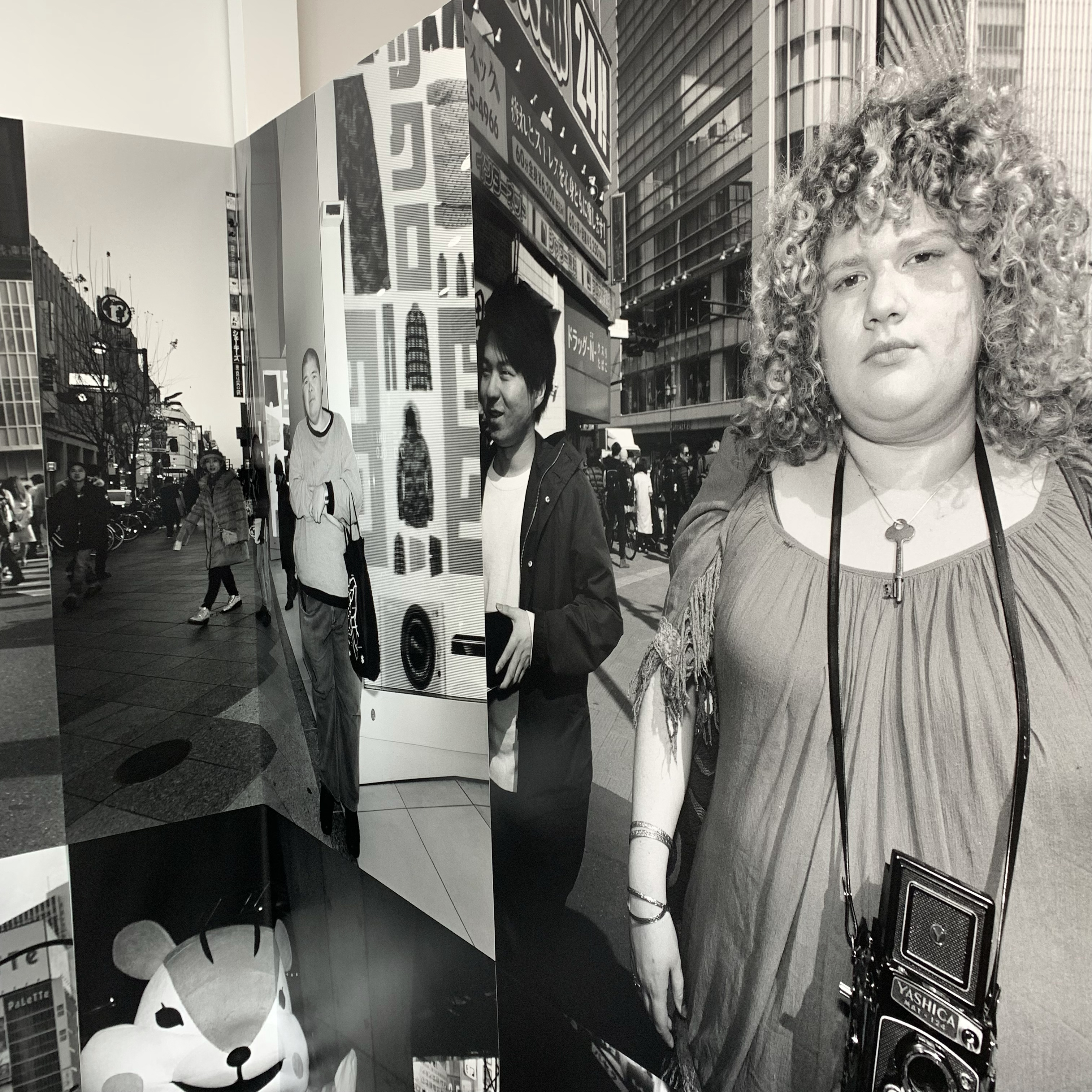
有元さんはこの作品のために、私が今まで入ったことのないような大きな暗室で数日間を過ごし、最大のシートで可能な限り大きなRCプリントを作成したのです。ワイルドです。でっかい。
現在の街中にはいたるところに実物よりも大きな顔が描かれた看板があり、道行く人たちにとって当たり前の景色になっています。あえて意識することはないかもしれません。また、普段私たちが人物の写真を見るのはスマートフォンの画面越しで、スクロールの一瞬だけ見ています。ここで見ている顔が大きく再現されることはほとんどありません。
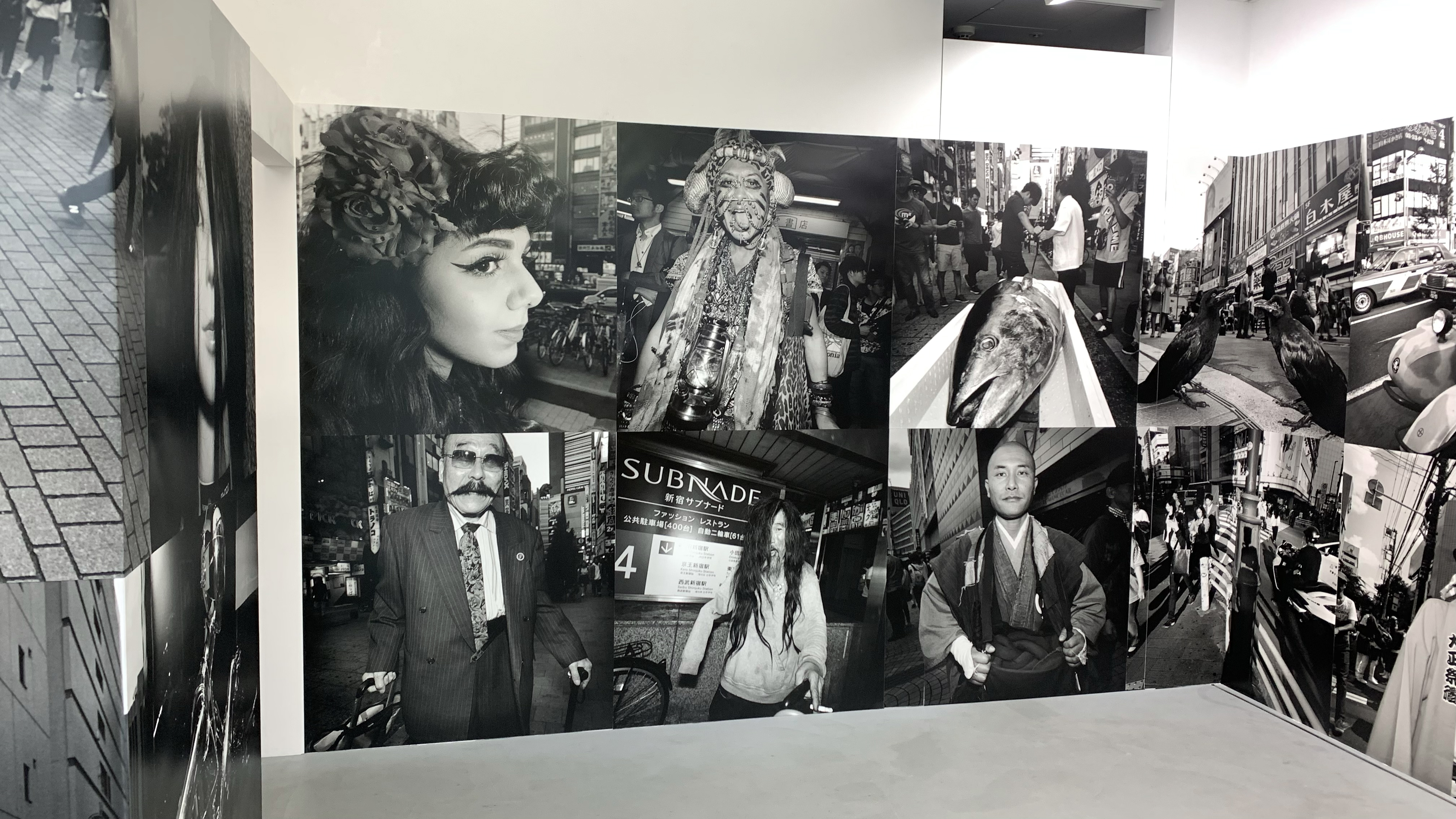
Zen Foto Galleryではモノクロームの巨人たちに圧倒されます。高島屋「美術画廊X」での展示の量に対して、巨大サイズのインパクトは、有元さんが抱く、写真というメディアと被写体に対する熱意を映し出しています。
写真の中の人物を有元さん自身、また私たち鑑賞者よりも大きくすることで、有元さんはある種の被写体に対する謙虚さを表現しているのではないかとも思います。美術の世界において、英雄や仏陀を巨大に再現するという前例もあります。
今にして思えば、有元さんの写真に対する姿勢には、僧侶的とまではいかないまでも、ある種のストイックなまでの献身があります。
ここで提示されるのは、菩薩の集合図なのかもしれません…。
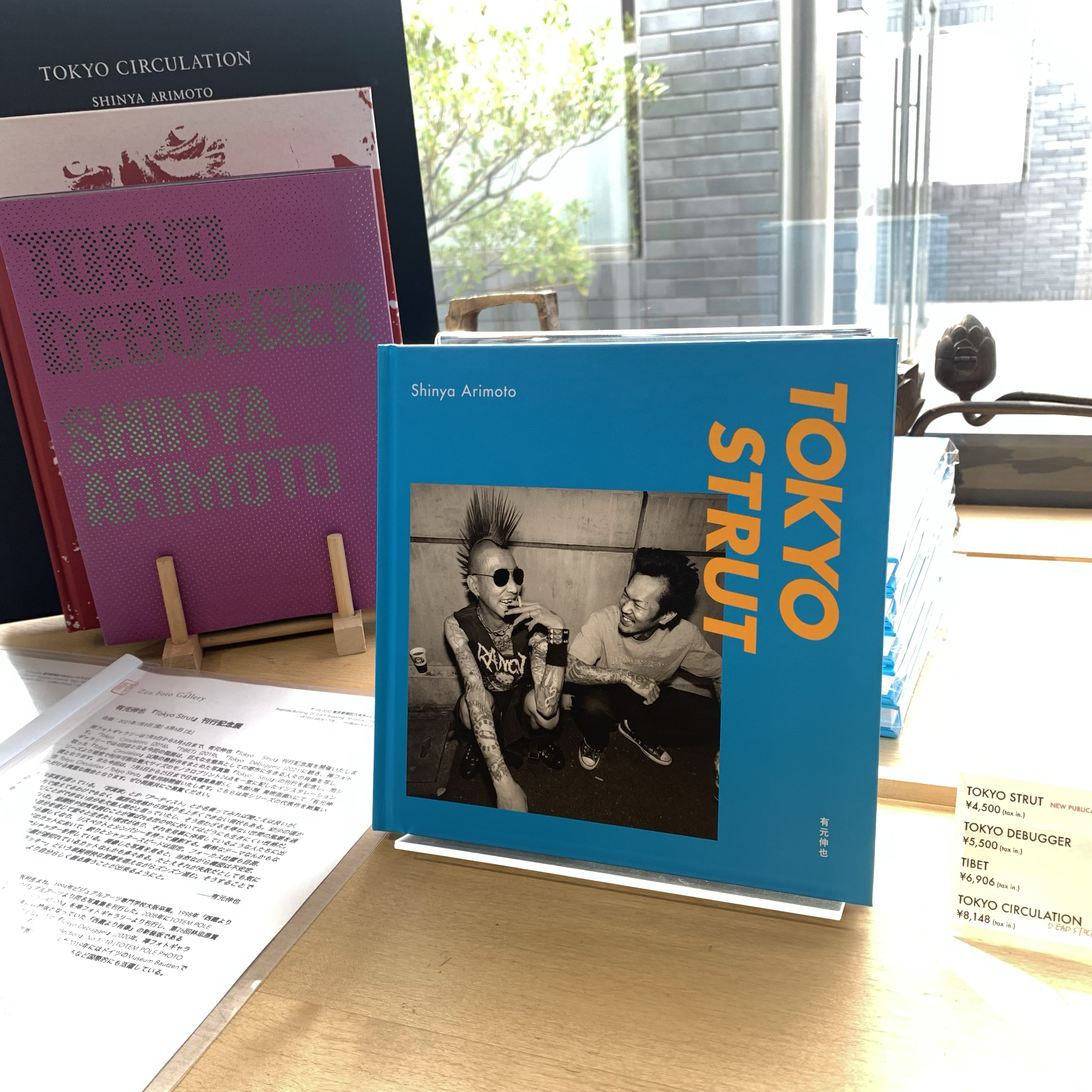
- 有元伸也『TOKYO STRUT』刊行記念展
- 会期:2022年7月8日~8月6日
- 会場:Zen Foto Gallery
- 12:00~19:00(日曜・月曜・祝日休廊)
- Zen Foto Galleryウェブサイト
- 有元伸也「TOKYO CIRCULATION/TOKYO STRUT」
- 会期:2022年7月6日~25日
- 会場:日本橋高島屋本館6階 美術画廊X
- 10:30~19:30
- 日本橋高島屋ウェブサイト
 Vol.41 中嶋琉平|Ryuhei Nakashima「Asia, New York, and Tokyo」、高地二郎|Jiro Kochi「GINZA: Through the eye of a Salaryman 1950-1990」
2025/11/08
Vol.41 中嶋琉平|Ryuhei Nakashima「Asia, New York, and Tokyo」、高地二郎|Jiro Kochi「GINZA: Through the eye of a Salaryman 1950-1990」
2025/11/08
 Vol.40 藤岡亜弥|Aya Fujioka「Life Studies」、荒木塁|Lui Araki 「Color/Scape」
2025/10/03
Vol.40 藤岡亜弥|Aya Fujioka「Life Studies」、荒木塁|Lui Araki 「Color/Scape」
2025/10/03
 Vol.39 榎本八千代|Yachio Enomoto「家族写真 / Family Photo」
2025/09/05
Vol.39 榎本八千代|Yachio Enomoto「家族写真 / Family Photo」
2025/09/05
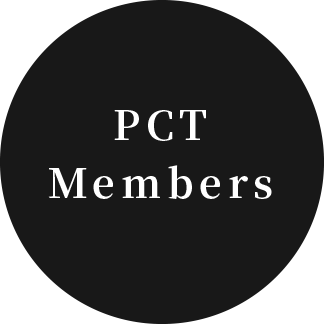
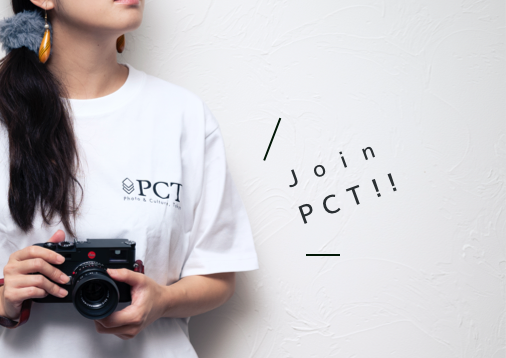
PCT Membersは、Photo & Culture, Tokyoのウェブ会員制度です。
ご登録いただくと、最新の記事更新情報・ニュースをメールマガジンでお届け、また会員限定の読者プレゼントなども実施します。
今後はさらにサービスの拡充をはかり、より魅力的でお得な内容をご提供していく予定です。
 「Photo & Culture, Tokyo」最新の更新情報や、ニュースなどをお届けメールマガジンのお届け
「Photo & Culture, Tokyo」最新の更新情報や、ニュースなどをお届けメールマガジンのお届け 書籍、写真グッズなど会員限定の読者プレゼントを実施会員限定プレゼント
書籍、写真グッズなど会員限定の読者プレゼントを実施会員限定プレゼント